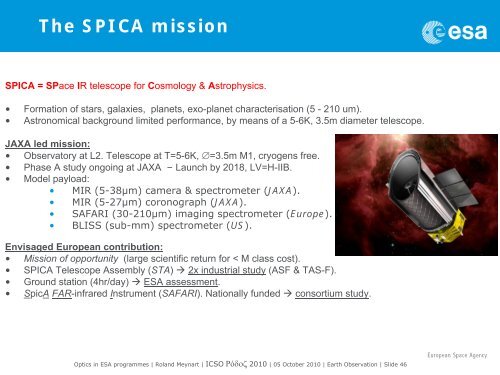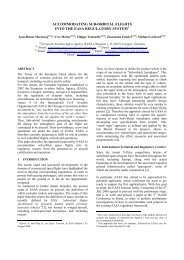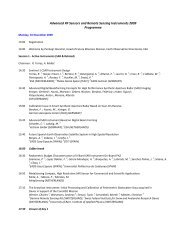Optical technologies in ESA programmes - Congrex
Optical technologies in ESA programmes - Congrex
Optical technologies in ESA programmes - Congrex
You also want an ePaper? Increase the reach of your titles
YUMPU automatically turns print PDFs into web optimized ePapers that Google loves.
The SPICA mission<br />
SPICA = SPace IR telescope for Cosmology & Astrophysics.<br />
•<br />
•<br />
Formation of stars, galaxies, planets, exo-planet characterisation (5 - 210 um).<br />
Astronomical background limited performance, by means of a 5-6K, 3.5m diameter telescope.<br />
JAXA led mission:<br />
• Observatory at L2. Telescope at T=5-6K, �=3.5m M1, cryogens free.<br />
• Phase A study ongo<strong>in</strong>g at JAXA – Launch by 2018, LV=H-IIB.<br />
• Model payload:<br />
• MIR (5-38µm) camera & spectrometer (JAXA).<br />
• MIR (5-27µm) coronograph (JAXA).<br />
• SAFARI (30-210µm) imag<strong>in</strong>g spectrometer (Europe).<br />
• BLISS (sub-mm) spectrometer (US).<br />
Envisaged European contribution:<br />
• Mission of opportunity (large scientific return for < M class cost).<br />
• SPICA Telescope Assembly (STA) � 2x <strong>in</strong>dustrial study (ASF & TAS-F).<br />
• Ground station (4hr/day) � <strong>ESA</strong> assessment.<br />
• SpicA FAR-<strong>in</strong>frared Instrument (SAFARI). Nationally funded � consortium study.<br />
Optics <strong>in</strong> <strong>ESA</strong> <strong>programmes</strong> | Roland Meynart | ICSO �ό��� 2010 | 05 October 2010 | Earth Observation | Slide 46
















